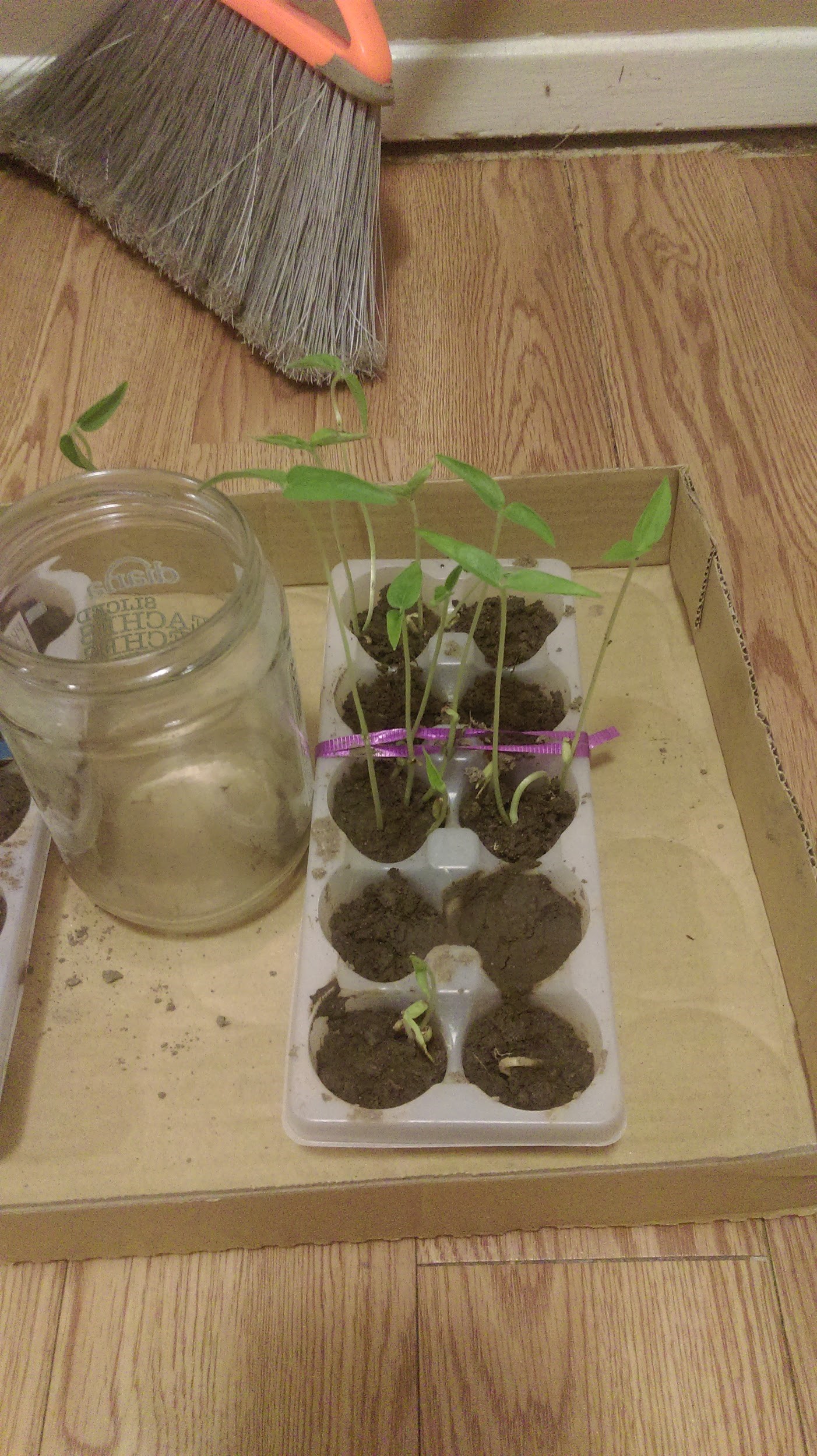
Beans Planting Diary #2 Wash them and remove any damaged beans and foreign objects. Fill the plastic case with cool, clean water. The beans will expand as they soak and take up even more space as they sprout, so give them plenty of space in the case. Soak they for 8 to 12 hours. Soak the beans for 8-12 hours at room temperature. A general rule of thumb: the larger the bean, the longer the soak.

Beans Planting Diary #3 A bean seed is kidney-shaped with a protective layer on the outside called a test. Inside the seed one can observe the two cotyledons which contain the embryonic plant between them. .New bean plants can actually live off of the stored food in the cotyledon for several days, if necessary, until they can reach nutrients in the soil. Bean seeds are planted in the water. They absorb water and the embryonic plant begins to grow and develop. Slowly, roots unfurl from the seed, reaching out for moisture and nutrients. Roots look like white threads as they grow out from the bean seed. The root grows downward first to begin absorbing water.

Beans Planting Diary #4 After a few days, the stalk of the plant begins to emerge from the water. Then, the cotyledons are exposed as the epicotyl emerges. The embryonic leaves develop and deploy. They are heart-shaped. The stem continues to develop as the heart-shaped seed leaves begin to deploy. Like all vegetables, beans need nutrient-rich soil. It is essential to amend the soil and continually replenish its nutrients. Planting bean seeds in good soil amended with compost helps the roots find available nutrients immediately. As the roots descend, they pull water and nutrients from the soil into the seed itself. Slowly, the seed receives what it needs to enter the next stage of its life cycle: leaf growth.

Beans Planting Diary #5 The first leaves to emerge from a bean plant do not look like the typical bean plant leaves. They're rounded, and help the plant grow quickly into a strong, mature plant.These leaves (also termed cotyledons) emerge above the ground, as opposed to below the soil surface which is common in other plants, and are connected to the seed. A stalk sets the seed and cotyledons firmly into the soil.

Beans Planting Diary #6 The first pair of leaves provide photosynthesis for the seedling. They drop off as soon as the mature leaves are produced. Within the leaves are special cells containing chlorophyll, which transforms sunlight into usable energy for the plant. As the plant receives warmth, moisture, sunlight and carbon dioxide, it is able to transform these elements into nutrition for growth and maintenance. New leaves emerge, and soon an entire plant is formed.

Beans Planting Diary #7 All vegetable plants and many flowers require large amounts of sunlight. My bean sprouts are too thin because of the poor weather recently. I think I have watered a lot, so they grow too fast. Adequate spacing between plants will ensure that each plant receives sufficient light in the greenhouse. The plant roots are surrounded by soil that supports the growing plant. At the same time, I realized that my soil was not enough to support bean sprouts. They often fall down and must be artificially supported, usually with string or stakes. Plants usually rely on soil primarily for support and water, but they also obtain compounds of nitrogen , phosphorus , potassium , magnesium and other elemental nutrients from the soil.

Beans Planting Diary #8 The mung bean is an annual vine. Mung beans are vigna, but It used to be classified as phaseolus. They have a small bulge between the two cotyledons, probably a second pair of leaves.The inflorescence is a raceme of yellow, blue, or purple pea flowers.The fruit is a legume pod of varying shape containing seeds.The mung bean is mainly cultivated in India , Pakistan , Bangladesh , Nepal , China , Korea , South Asia and Southeast Asia

Beans Planting Diary #9 Beans are one of the longest-cultivated plants. Beans are a heliotropic plant, meaning that the leaves tilt throughout the day to face the sun. At night, they go into a folded "sleep" position. Beans are erect or semi-erect, reaching a height of 15cm. It is slightly hairy with a well-developed root system. Many mung beans tend to be prostrate while some mung beans are more erect.

Beans Planting Diary #10 Excessive heat and humidity can cause a variety of disease problems in beans, and the more common of these diseases are bacterial or wilt diseases. The mung bean is a fast-growing, warm-season legume. It reaches maturity very quickly under tropical and subtropical conditions where optimal temperatures are about 28-30°C and always above 15°C. It can be sown during summer and autumn. It does not require large amounts of waterand is tolerant of drought. It is sensitive to waterlogging. High moisture at maturity tends to spoil the seeds that may sprout before being harvested. The mung bean grows on a wide range of soils but prefers well-drained loams or sandy loams. It is somewhat tolerant to saline soils.

Beans Planting Diary #11 The mung bean leaves are pinnate and divided into 3 leaflets. The stems are many-branched, sometimes twining at the tips.The leaves are alternate, trifoliolate with elliptical to ovate leaflets, 5 cm long x 3 cm broad. The flowers are papillonaceous, pale yellow or greenish in colour. The pods are long, cylindrical, hairy and pending. modern varieties ripen within 60-75 days that have enough time.
